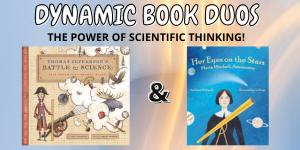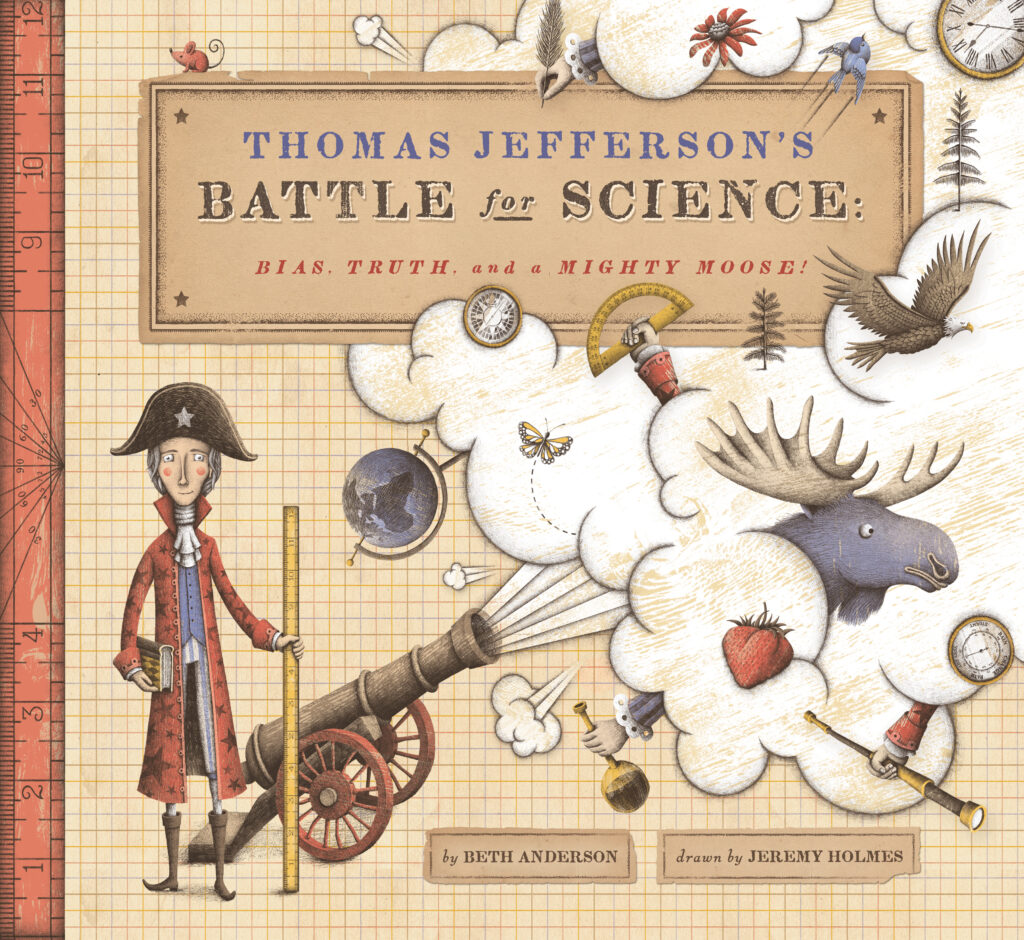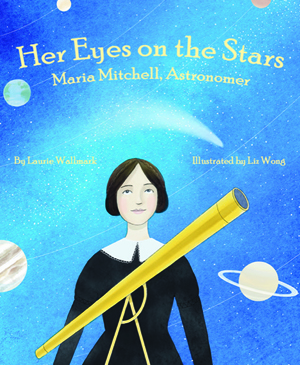
Please welcome authors Beth Anderson and Laurie Wallmark to Dynamic Book Duos – a blog featuring two books that pair together in a meaningful way along with educational activities to strengthen reading skills. This week’s pairing focuses on the power of scientific thinking!
PERFECT PAIR: The Power of Scientific Thinking
Though Maria Mitchell and Thomas Jefferson appear very different, they actually have a lot in common. And both of their stories share the power of scientific thinking and actions. This dynamic book duo offers young readers a chance to see scientific discovery through time, from earth and in space.
Book 1: Thomas Jefferson’s Battle for Science: Bias, Truth, and a Mighty Moose!

A scientist at heart, Thomas Jefferson measured and recorded the natural world as he experimented and explored. When a famed French scientist claimed the New World was inferior to the Old, Thomas fought back. Thomas Jefferson’s Battle for Science: Bias, Truth, and a Mighty Moose! tells how Jefferson used scientific thinking and inquiry to battle faulty facts and bias to prove that his new nation was not inferior—just different.
Book 2: Her Eyes on the Stars: Maria Mitchell, Astronomer

Her Eyes on the Stars: Maria Mitchell, Astronomer tells the story of the first American to discover a comet. As the first woman astronomy professor in the world, Maria used her position at Vassar College to teach young women to set their sights on the sky, training new generations of female astronomers. Her story inspires all of us to reach for the stars.
EDUCATIONAL ACTIVITIES:
Activities for Thomas Jefferson’s Battle for Science: Bias, Truth, and a Mighty Moose!
Activities for Her Eyes on the Stars: Maria Mitchell, Astronomer:
Activities for Both Books:
Think Like A Scientist
What do you think it means to “think like a scientist”?
Make a T-chart. Label one side Thomas Jefferson, and the other Maria Mitchell. Record examples from the books that show how each used scientific thinking. When you finish, draw lines across your T to match actions common to both.
Character Traits of Scientists
Think back to the stories and the information on your T-chart. What character traits shine through? What did they need to be successful? How were the two historical figures alike and different?
What About You?
Now consider yourself. What in the world or universe do you find especially fascinating?
What types of “scientific thinking” or actions would you need to do to investigate?
What character traits do you have that would help you?
What traits might you need to develop to be successful?
Picture It!
Look back over the illustrations in these two books which show these two scientists’ journeys in both books in very different styles. Consider what your scientific investigation might look like. Draw one small piece of your journey to discovery in your own style.
MEET THE AUTHORS:

